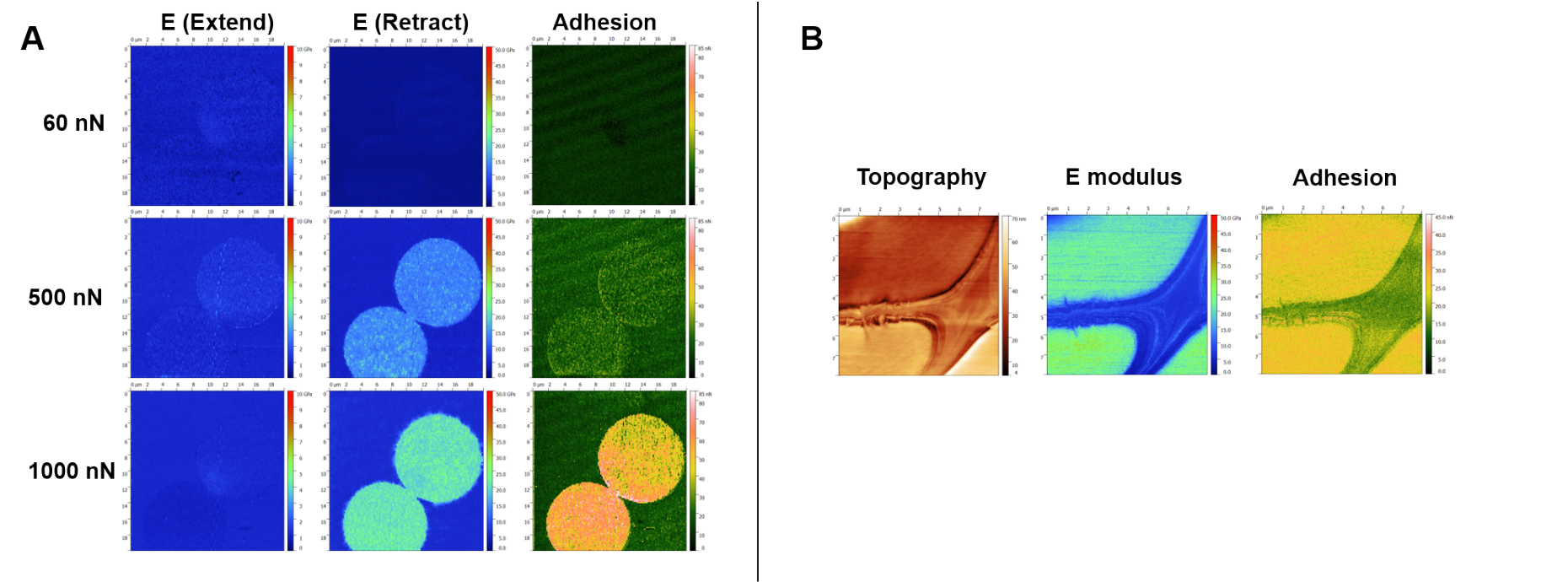Functional Wood Materials and Characterization - Dr Tobias Keplinger
The group focuses on revealing the chemistry, structure and mechanics of native and functionalized plant material on a cell wall level by using high resolution analysis techniques such as Raman spectroscopy imaging and Atomic Force Microscopy (AFM).
In addition, the group aims at using the wood inherent cellulose scaffold for the development of high performance novel functional composite materials. Twitter account: external pagehttps://twitter.com/FuncWood_ETHcall_made
Densified Cellulose Composites
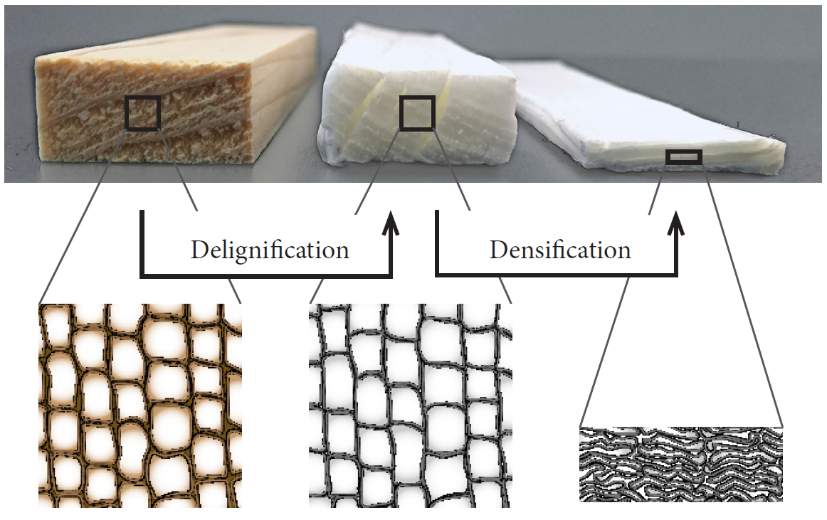
Based on a delignification and densification procedure of wood, novel high performance natural fiber composites are developed. The hierarchical structure and directionality of wood are preserved during the process and thus the obtained cellulose material combines highly desired material properties as high strength and toughness. Furthermore, the formability of delignified wood in wet state allows for optimizing the fiber alignment to specific loading conditions and the incoporation of functional gradients.
Relevant Publications:
- external pageDelignified and Densified Cellulose Bulk Materials with Excellent Tensile Properties for Sustainable Engineering, ACS Applied Materials and Interfaces 2018call_made
- external pageTunable Wood by Reversible Interlocking and Bioinspired Mechanical Gradients, Advanced Science, 2019call_made
- external pageFabrication and Design of Wood-Based High-Performance Composites, JoVE, 2019call_made
Video: “Transforming wood into a high-performance material”: https://www.ethz.ch/en/industry-and-society/industry-relations/industry-news/2018/07/transforming-wood-into-a-high-performance-material.html
People involved:
- Dr. Marion Frey (PhD 2017-2020)
- Sophie Koch (PhD)
- Paul-Antoine Spies (PhD)
- Dr. Tobias Keplinger (Group Leader)
Delignified Wood Reinfored Polymers (DWRPs)
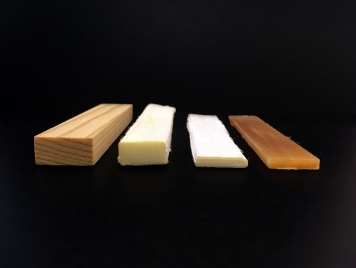
The mechanical performance of densified cellulose materials can be improved by adding a polymer matrix into the porous cellulose scaffold. Various matrix systems (e.g. thermoplasts, duroplasts) will be evaluated. In addition to the determination of the macroscopic mechanical properties of the composites, a special focus will be laid on a detailed characterization of the structural and mechanical characteristics on the cell wall level via Atomic Force Microscopy in order to gain new insights into the relevant structure-function relationships at the micro- and nanoscale.
Relevant Publications
People involved:
- Dr. Marion Frey (PhD 2017-2020)
- Sophie Koch
- Paul-Antoine Spies (PhD)
- Dr. Tobias Keplinger (Group Leader)
Functionalization of wood and wood-derived cellulose scaffolds by metal organic frameworks
The development of novel functional materials based on sustainable and renewable resources represents one of the main current challenges in materials science. Especially wood, as one of the most abundant renewable resources has attracted increasing attention for the development of advanced materials. In this work, a new type of hybrid material is developed based on the in situ formation of metal-organic frameworks (MOFs) within wood and wood-based cellulose scaffolds, respectively. The hereby-obtained hybrid materials combine the intrinsic properties of wood (excellent mechanical properties of a lightweight structure) with the unique characteristics of MOFs including ultra-high surface area and porosity. This results in a new type of composite material with high potential in new applications for wood including gas adsorption, separation and sensing.
Relevant Publications
People involved
- Kunkun Tu (PhD)
- Tobias Keplinger (Group Leader)
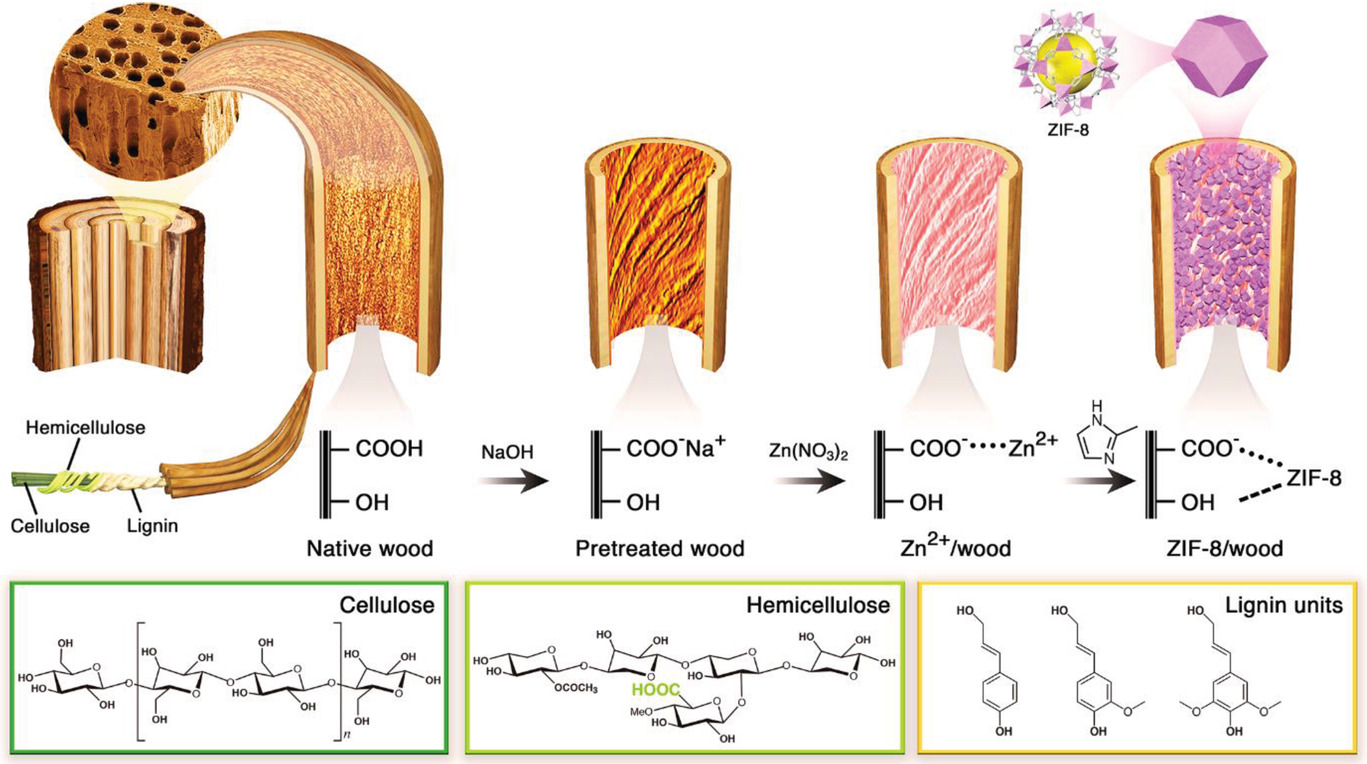
Ultrastructural and mechanical characterization of native and functionalized wood cell walls via Atomic Force Microscopy
Our work focuses on the structural and mechanical characterization of native and chemically treated wood cell walls at the nanoscale using atomic force microscopy (AFM) to provide new insights into the hierarchical organization of the cell wall and its interaction with additional synthetic components. AFM is a powerful tool that makes use of a cantilever with a specific spring constant and a very sharp tip for raster mapping of topographical and mechanical properties. The tip-sample interaction yields valuable information on the architecture and surface energies of the sample, enabling quantitative measurements of elastic modulus, adhesion and stiffness magnitudes throughout the sample surface with high lateral resolution.
Our efforts are aimed at unravelling the most common experimental challenges in AFM including an adequate sample preparation, selection of the imaging mode, an accurate description of the tip geometry or choice of the cantilever stiffness among others.
Main research topics:
1. Structural organization of delignified wood scaffolds
AFM permits the visualization of the cellulose fibrils aggregates (~20 nm diameter) of completely or partially delignified wood cell walls without embedding approaches. The figure shows the absence of lignin in the compound middle lamella region and a clear differentiation between the S1 and S2 cell wall layers on a spruce cross section on the basis of their microfibril angle.
Relevant Publications
Involved People
- Dr. Maria Adobes Vidal (Postdoc 2018-2020)
- Dr. Tobias Keplinger
2. Characterization of wood, adhesive and primer systems at the cell wall level
The use of primer systems prior the application of once component polyurethane adhesives for loadbearing timber constructions is necessary to fulfil certain standardized mechanical properties. However, the mode of action of the primer systems remains unclear. We use AFM for a detailed characterization of the influence of the primer on the interface region between wood and adhesive. The figure shows that the wood-adhesive contact in much stronger in the presence of primer. Additionally, in wood-primer-adhesive systems, quantitative imaging (QI)-AFM can detect a few nanometer region of high adhesion at the wood-adhesive interface.
Relevant Publications
Involved People
- Dr. Kirstin Casdorff (PhD 2014-2018)
- Dr. Maria Adobes Vidal (Postdoc 2018-2020)
- Dr. Tobias Keplinger (Group Leader)
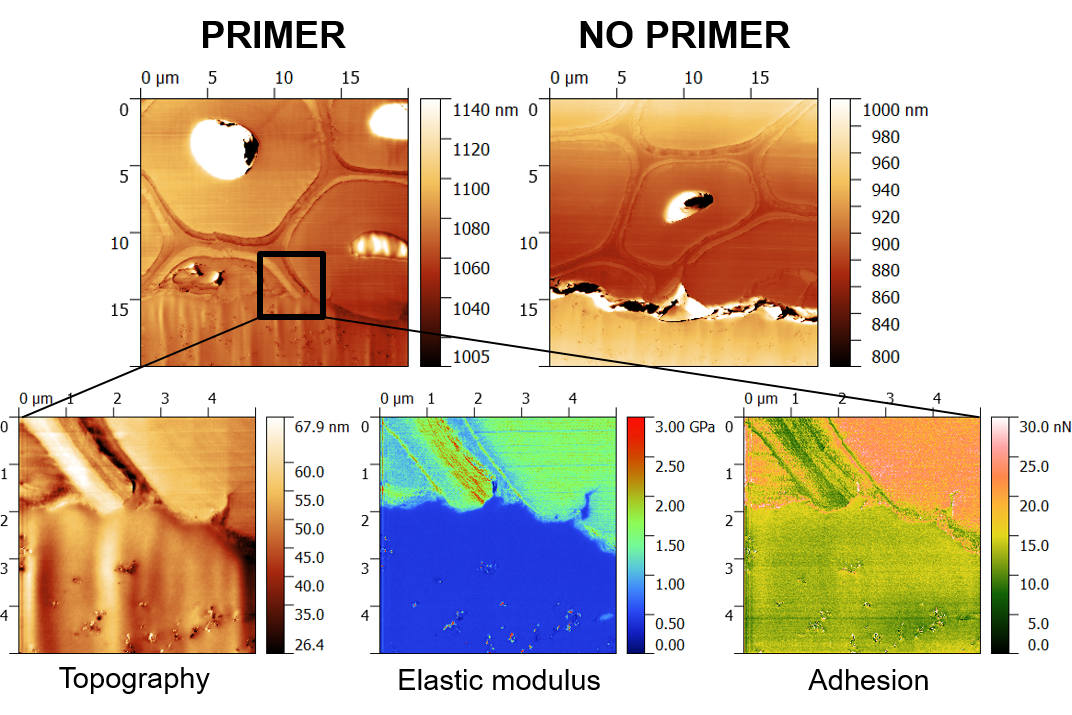
3. Challenges and potential of nanomechanical characterization of plant cell walls by AFM
Quantitative mechanical maps on reference materials are used to establish a general protocol for accurate quantitative imaging of nanomechanical properties of wood cells. The figure shows the dependency of the elastic modulus and adhesion values on the imaging parameters obtained for a reference sample composed by regenerated cellulose fibers embedded in epoxy resin (A). The elucidation of the optimal imaging parameters from the analysis of the reference sample allows obtaining mechanical maps of wood fibers in good agreement with previous microscopic measurements.
Relevant Publications
Involved People:
- Dr. Maria Adobes Vidal (Postdoc 2018-2020)
- Dr. Kirstin Casdorff (PhD 2014-2018)
- Dr. Tobias Keplinger (Group Leader)
Contact
No database information available


